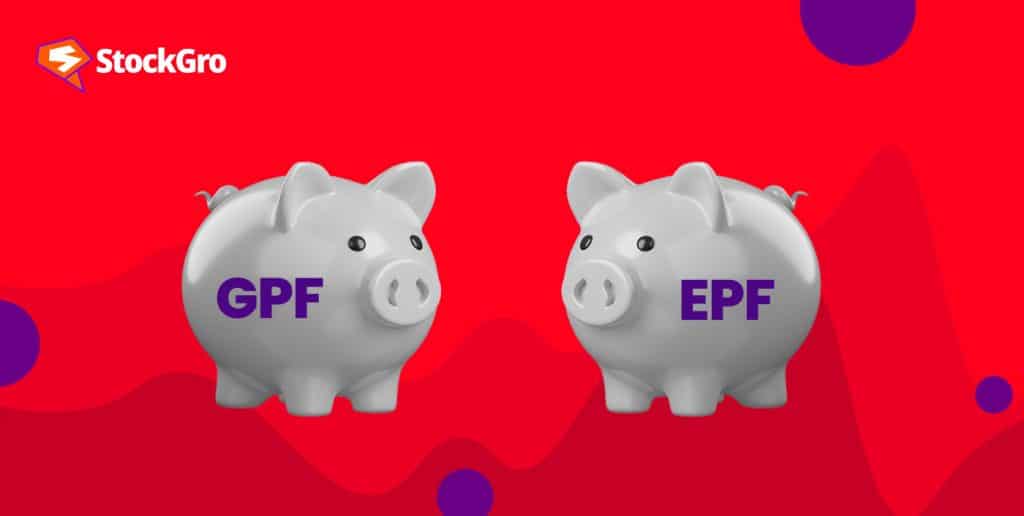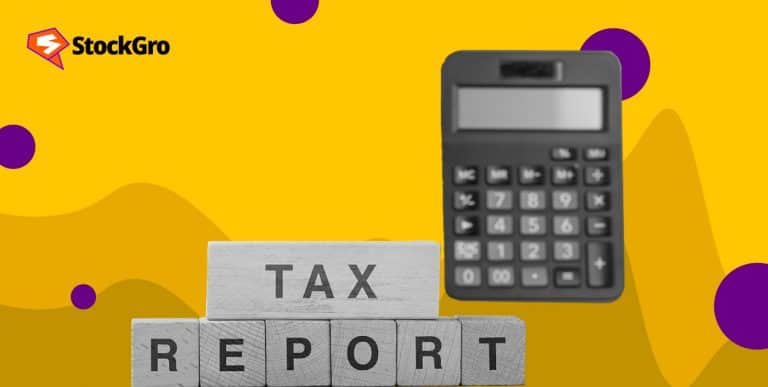
In this article, we’re going to explore the main differences between a General Provident Fund (GPF) and an Employee Provident Fund (EPF).
What is a GPF?
GPF stands for General Provident Fund. It’s a retirement savings scheme offered specifically to government employees in India. Only government employees who joined service before December 31, 2003 and are under the Old Pension Scheme (OPS) are eligible for GPF.
Here’s how GPF works
- Contributions to the GPF are entirely employee-driven: Unlike some retirement plans, GPF relies solely on employee contributions. You can contribute a minimum of 6% of your basic salary up to 100%. There is no employer contribution to a GPF account.
- Fixed interest rate: The interest rate on GPF is currently fixed, similar to the Public Provident Fund (PPF). This rate is determined by the government and may change periodically.
- GPF contributions are tax-deductible: Contributions towards GPF are tax-deductible under Section 80C of the Income Tax Act in India. This helps you save on tax liabilities by reducing the amount of your income that can be taxed.
- Withdrawal flexibility: GPF generally offers more flexibility in withdrawals compared to the Employees’ Provident Fund (EPF), another common provident fund scheme in India.
What is an EPF?
An EPF serves the same purpose as a GPF, but for employees in the private sector. EPF contributions are mandatory for most salaried employees working in establishments that employ 20+ people. This includes private companies, public sector undertakings, and some educational institutions.
Here are some basic characteristics of the Employee Provident Fund:
- Shared responsibility: EPF follows a shared contribution model. Both the employee and employer contribute an equal share of a specific percentage of the employee’s basic salary (capped amount) towards the EPF account. The current contribution rate is typically 12% of the basic salary, but this may be subject to change.
- EPF rates are market linked: Unlike GPF with a fixed rate, the EPF interest rate is declared annually by the Employees’ Provident Fund Organisation (EPFO).
- Tax advantages: Contributions towards EPF by both employee and employer are tax-deductible under Section 80C of the Income Tax Act.
- Maturity: EPF funds are typically available for full withdrawal upon retirement (after 58 years of age) or under specific circumstances like resignation, permanent disability, or medical emergencies.
CTA: Importance of retirement planning
The main differences between GPF and EPF
Here are the main differences between the two provident funds, at a glance:
| Feature | GPF (General Provident Fund) | EPF (Employees’ Provident Fund) |
| Eligibility | Government employees who joined service before December 31, 2003 | Employees working in establishments with more than 20 employees |
| Contribution | No employer contribution | Shared contribution: Employee and employer contribute an equal share |
| Interest Rate | Fixed | Declared annually by the Employees’ Provident Fund Organisation (EPFO) |
| Tax Benefit | Contributions are tax-deductible under Section 80C of the Income Tax Act | Contributions from both employee and employer tax-deductible |
| Withdrawal | Generally more flexible than EPF | Limited withdrawals allowed under specific conditions |
| Account Management | Limited online access might be available | Online access available through the EPFO portal |
| Nomination | Varying depending on department | Crucial to nominate benficiary |
| Transferring Accounts | Limited | Account can be transferred post job change |
| Government Backing | Government-backed | Backed by the EPFO, a government body |
| Relevance Today | Less common with the shift towards NPS for new government employees | Mandatory scheme for most salaried individuals in eligible establishments |
Frequently Asked Questions
What happens to my GPF account if I leave government service before retirement?
Unlike EPF, GPF allows full withdrawal upon resignation from government service. However, the interest earned might be lower than the regular rate for premature closure.
CTA: Step by step guide on retirement planning for baby boomers
Can I contribute to both GPF and EPF?
No. If you’re eligible for both (government employee under Old Pension Scheme with a side hustle meeting EPF criteria), you can only choose one scheme for contributions.
How do interest rate fluctuations in EPF affect my retirement corpus?
EPF interest rates can vary. While a higher rate makes your corpus grow faster, a lower rate might slow it down. However, since EPF offers a long-term investment horizon, the impact of rate fluctuations can even out over time.
I’m self-employed and not eligible for EPF. Are there any alternative retirement savings options?
Yes. You could explore options like the National Pension System (NPS), Public Provident Fund (PPF), or voluntary contributions to Retirement Saving Schemes (RSS) offered by mutual funds.
Can I use my EPF funds for a down payment on a house?
No, using EPF funds for purposes other than retirement or specific emergencies is not allowed. There are penalties for unauthorised withdrawals.

